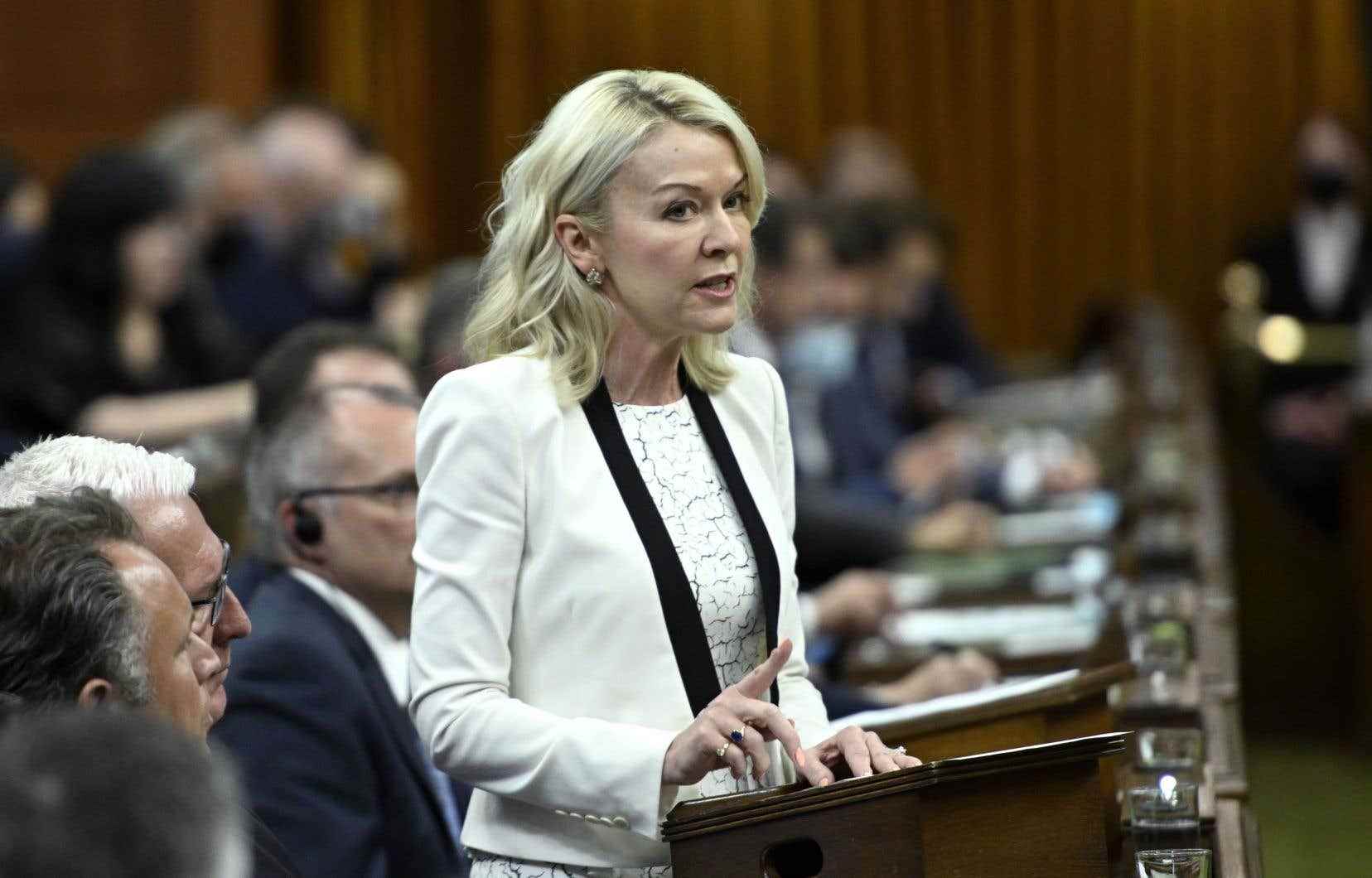Acting party leader Candice Bergen announced on Tuesday that she will not run in the next election. She was chosen by her peers last February to become interim leader of the Conservative Party – and of the official opposition. Leader Erin O’Toole had just been ousted by his caucus following the party’s disappointing loss in the general election last September.
Ms. Bergen, 57, was first elected in 2008 in the Manitoba riding of Portage-Lisgar, where she has been re-elected continuously ever since. Within the governments of Stephen Harper, she was appointed in 2011 Parliamentary Secretary to the Minister of Public Security, then in 2013 Minister of State for Social Development.
In opposition after the 2015 election, Ms Bergen was named Conservative House Leader. Then, under Erin O’Toole, she became Deputy Party Leader in 2020.
Ms Bergen said in a written statement on Tuesday that she will remain an MP “for the immediate future” and that she looked forward to seizing “new opportunities”. She assures that she will “wholeheartedly” support the person who will be chosen next Saturday and she says she is “incredibly optimistic” about the future of the Conservative movement in Canada.
A campaign that comes to an end
The campaign for the leadership of the Conservative Party of Canada is therefore drawing to a close. Membership ballots had to be received by 5 p.m. Tuesday, Ottawa time, in order to be processed, validated and counted in time for this weekend’s announcement.
The party is once again using a “preferential” ballot to choose its next leader from among five candidates: Pierre Poilievre, Jean Charest, Leslyn Lewis, Scott Aitchison and Roman Baber.
Patrick Brown’s name is still on the ballots despite his disqualification in July. For the members who have chosen it as their first choice, the scrutineers of the party will then automatically move on to the second choice listed on the ballot.
The winner will become this weekend the fourth permanent leader of this party, after Stephen Harper, Andrew Scheer and Erin O’Toole.
Preferential ballot
The identity of the next Conservative leader is to be announced Saturday in Ottawa. The party opted for a points-based system, to ensure regional representation.
Points are distributed among Canada’s 338 electoral districts, with each getting as many points as it has party members, up to a maximum of 100 points. Each candidate will then collect in each constituency the number of points equivalent to the percentage of votes he obtained there.
If no one obtains more than 50% of the votes in the first round, the candidate who has collected the fewest points must withdraw from the race. Members who selected him as their first choice will have their votes transferred to their second choice. This process can be repeated up to three times, for a candidate to obtain a simple majority.
Party authorities said last week that more than half of the ballots for the 678,000 eligible members had already been received.
